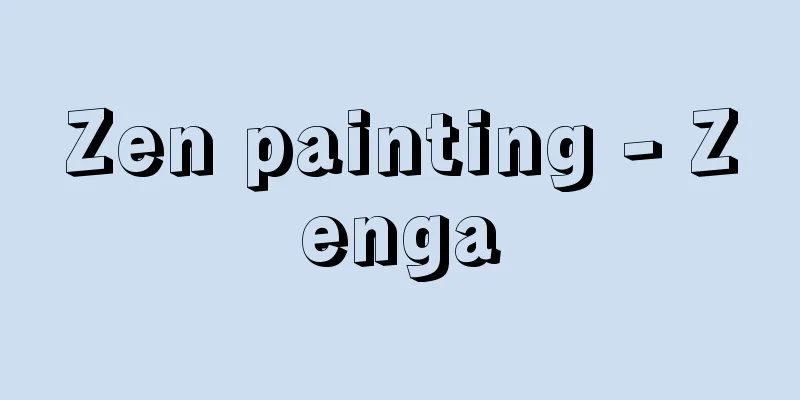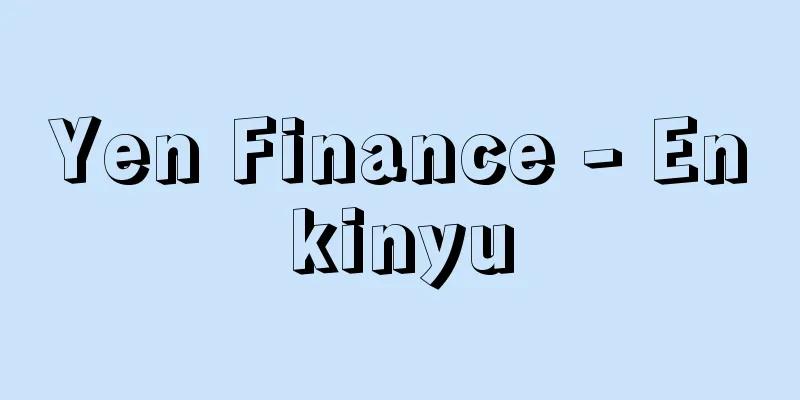The Open University - Hosoudaigaku

|
A new type of university where students can receive a regular university education by utilizing their limited time through watching TV and radio, correspondence courses, and schooling. The aim is to expand flexible and fluid higher education opportunities. In Japan, research and consideration has been conducted since 1967, and on July 1, 1981, the Ministers of Education, Culture, Sports, Science and Technology and Posts and Telecommunications became the responsible ministers and the special corporation "The Open University of Japan" was launched, and the Open University was established on April 1, 1983. It then began accepting students on April 1, 1985. From the 2009 academic year, the undergraduate school will have only one faculty, the Department of Liberal Arts, with five courses: "Life and Welfare," "Psychology and Education," "Society and Industry," "Humanity and Culture," and "Nature and Environment." There is no entrance exam, and students are admitted on a first-come, first-served basis, and a "Bachelor of Arts (Liberal Arts)" degree is awarded upon graduation. There are three types of students. General students are enrolled for four years or more (maximum 10 years) and can graduate with the required 124 or more credits. Elective students are enrolled for one year and take the subjects they want to study. Subject students are enrolled for one semester (6 months) and take the subjects they want to study. There is also a system of intensive subject students who take "subjects that contribute to librarian teacher qualifications" and "subjects that contribute to obtaining nursing qualifications" for three months from July to September each year. All students, except for those taking all courses, are taking courses to improve themselves, such as applying what they have learned to their work or deepening their knowledge, and not to graduate. In addition, there are students from other universities who are taking courses as special auditors under an agreement with the Open University of Japan. Since the school opened, over 51,000 students have graduated, and there are approximately 79,000 students enrolled nationwide (as of the second semester of 2008). In April 2002, a correspondence graduate school was opened where students can obtain a master's degree. There was only one graduate school (Graduate School of Cultural Studies) and one major (Major in Cultural Studies), but from 2009, this was changed to six programs: Life and Health Science, Human Development Science, Clinical Psychology, Social Management Science, Cultural Information Studies, and Human Environmental Science. There are three types of students. Master's degree students study for two years (5 years), belong to one of the programs, and earn more than 30 credits including research guidance (8 credits) and broadcast courses (8 credits) of the program they belong to. If they pass the review and oral examination of their master's thesis or specific research topic, they will be awarded a master's degree. The admission limit is 500 people, and admission is selected from university graduates (including those who are expected to graduate) or those who the Open University of Japan recognizes as having academic ability equal to or higher than that of university graduates. The competition rate for the clinical psychology program is particularly high. Master's degree students are enrolled for two semesters (one year), while master's degree students are enrolled for one semester (six months). They are not affiliated with any program and can freely select and take the courses they wish to study. The combined enrollment capacity for both is 11,000, and there is no selection process for students. In the second semester of the 2008 academic year, there were approximately 5,900 graduate students enrolled. The open-door approach to universities is also being pursued in the United States, Germany, and France, but Japan's Open University is modeled mainly on the British Open University. The university was established in 1969 at the suggestion of H. Wilson, then leader of the Labour Party, in 1963 (when it was first proposed it was called the University of the Air). Education is primarily through correspondence courses, supplemented by BBC broadcasting, and individual instruction, group seminars, and summer schools are held at learning centers around the country. The Open University of Japan established the Center for ICT (Information and Communication Technology) and Distance Learning in 2009. It also has Learning Centers (50 locations nationwide) that are open on Saturdays and Sundays, and its branches (7 satellite locations), which provide student support activities such as face-to-face classes, club activities, and study consultations. Both the Centers and satellite locations have introduced the latest educational technology, and it is expected that they will contribute to the improvement of higher education in Japan. On the other hand, there are still issues that need to be resolved, such as the balance between research and education, and the balance between academic freedom and broadcasting. As of 2010, the headquarters is located at 2-11 Wakaba, Mihama-ku, Chiba City. [Hiroshi Kimura and Katsumi Akao] "The Open University: The History of the British Open University" by Walter Perry, translated by Nishimoto Sanjuji et al. (1979, Sogensha) " "What Happened at the Open University of Japan? - Rethinking the University of the Air" edited by Usami Hiroshi and Fukaya Masashi (1989, Reimei Shobo)" " My Lifelong Learning: The First Testimony of the Open University of Japan Graduates" edited by the Lifelong Learning Research Group (1990, Daiichi Hoki Publishing) [References] | | | |Source: Shogakukan Encyclopedia Nipponica About Encyclopedia Nipponica Information | Legend |
|
テレビ・ラジオの視聴、通信教材、スクーリングにより、限られた時間を活用して正規の大学教育が受けられる新しいタイプの大学。柔軟かつ流動的な高等教育機会の拡充を目的とする。日本では1967年(昭和42)以来調査・検討がなされ、1981年7月1日に文部・郵政両大臣が主務大臣となり特殊法人「放送大学学園」が発足し、1983年4月1日に放送大学が設置された。ついで1985年4月1日に学生を受け入れて開講した。 2009年度から、学部は教養学部教養学科のみとなり、「生活と福祉」「心理と教育」「社会と産業」「人間と文化」「自然と環境」の五つのコースからなる。入学試験はなく、入学者は申込み順に許可され、卒業時に「学士(教養)」の学位が授与される。学生には3種類ある。全科履修生は、4年以上(最高10年)在学し、所定の124単位以上修得で卒業できる。選科履修生は、1年間在学し学習したい科目を履修する。科目履修生は1学期間(6か月)在学し、学習したい科目を履修する。科目履修には毎年7月から9月までの3か月間「司書教諭資格に資する科目」と「看護師資格取得に資する科目」を履修する集中科目履修生という制度もある。 全科履修生以外はいずれも、仕事に生かす、教養を深めるなど、自分を高めるための履修で卒業が目的ではない。また、ほかの大学等の学生で、放送大学との協定に基づいて、特別聴講生として科目の履修を行っている学生もいる。開校以来5万1000人以上が卒業し、全国に約7万9000人の学生が在学している(2008年度第2学期現在)。 また、2002年4月には修士号を修得できる通信制の大学院が開校した。1研究科(文化科学研究科)の1専攻(文化科学専攻)のみであったが、2009年度から生活健康科学、人間発達科学、臨床心理学、社会経営科学、文化情報学、人間環境科学の六つのプログラムに変更された。学生には3種類ある。修士全科生は、2年(在学年限は5年)在学し、いずれかのプログラムに所属して、研究指導(8単位)および所属プログラムの放送授業科目(8単位)を含めて30単位以上習得し、修士論文または特定課題研究の審査および口頭試問に合格すれば修士の学位が授与される。定員は500人で、大学卒業者(卒業見込み者を含む)または放送大学が大学を卒業した者と同等以上の学力があると認めた者について入学者選考を行う。臨床心理学プログラムの競争倍率がとくに高い。修士選科生は2学期間(1年間)、修士科目生は1学期間(6か月)在学し、プログラムには所属せず、学習したい科目を自由に選択して履修できる。双方合わせての定員は1万1000人で、入学者選考はない。2008年度第2学期では、大学院生は約5900人が在学した。 大学の開放化は、アメリカ、ドイツ、フランスでも進められているが、日本の放送大学はおもにイギリスの「公開大学」Open Universityを範とする。同大学は1963年当時の労働党党首H・ウィルソンの提案により1969年に設立された(提案当初は「放送大学」University of the Airと称した)。通信教材による教育が主体で、BBC放送がこれを補い、各地の学習センターでは個人指導、グループ・セミナー、サマー・スクールが開かれている。 放送大学は、2009年にICT(情報通信技術)活用・遠隔教育センターを設置した。また、土曜日、日曜日にも利用できる学習センター(全国に50か所)とその分室(7か所のサテライト)を設け、面接授業、サークル活動や学習相談などの学生支援活動が展開されている。センター、サテライトともに最新の教育技術を導入しており、日本の高等教育の改善に資するものと期待されている。他方では、研究と教育のバランス、学問と放送の自由の均衡といった解決されるべき問題も残されている。2010年現在の本部は千葉市美浜区若葉2-11。 [木村 浩・赤尾勝己] 『ウォルター・ペリー著、西本三十二ほか訳『オープンユニヴァーシティー――英国放送大学の歩み』(1979・創元社)』▽『宇佐美寛・深谷昌志編著『放送大学で何が起こったか――あらためて「大学」を問う』(1989・黎明書房)』▽『生涯学習研究会編『私の生涯学習――第一回放送大学卒業生の証言』(1990・第一法規出版)』 [参照項目] | | | |出典 小学館 日本大百科全書(ニッポニカ)日本大百科全書(ニッポニカ)について 情報 | 凡例 |
>>: Packaged food - prepackaged food
Recommend
Kyushu University Live Dissection Incident - Kyushu University Live Dissection Incident
…The experimental data was secretly taken back by...
Sumatra barb (English spelling)
...Gentle, hardy, and easy to keep. (b) Sumatra b...
Genus Geranium - Geranium
...A general term for the subgenus Sedum, part of...
Tiézy (English spelling)
… The mountain range is home to many prehistoric ...
Film Library
It refers to an institution that collects and pres...
Raoul Dufy
French painter. Born in Le Havre on June 3rd to a...
Agade - Agade
...Many of the kings of the First Dynasty of Kish...
Kitchiri - Kitchiri
…Other varieties include the bouquet orange, whic...
Officer candidate - Kanbu Kohosei
〘noun〙① In the former army, a person who had gradu...
Lenoir, JJÉ. (English spelling) LenoirJJE
…also called a gasoline engine. A spark-ignition ...
Barred Plymouth Rock - Barred Plymouth Rock
… [Dual-purpose egg and meat breed] A breed kept ...
Painful
A type of dialogue in Kabuki theatre. It refers t...
High tree
〘 noun 〙 A tall tree. In botany, it refers to a tr...
Institute of Marxism-Leninism
An affiliated organization of the Central Committe...
Bird - Tori
It refers to birds, and can also refer to chicken...









